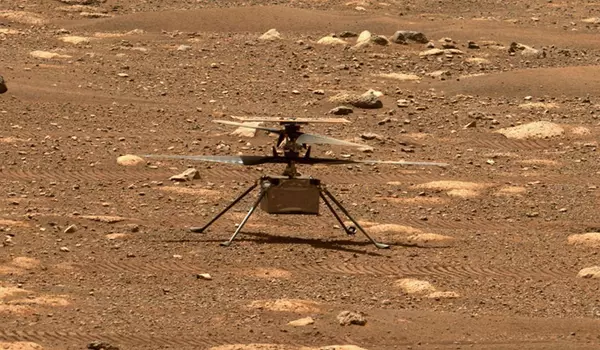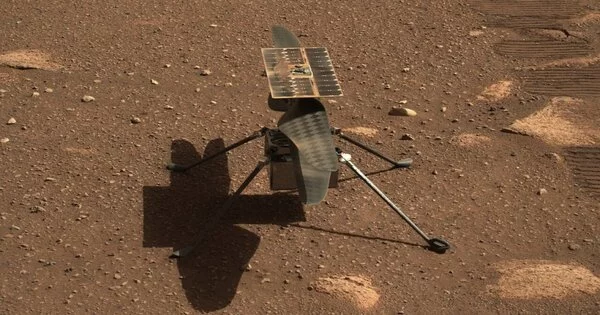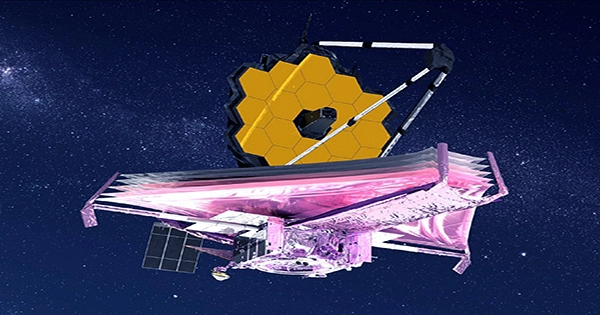NASA’s Mars chopper is taking a vacation from its unprecedented operations on Mars’ surface. On Mars, it is currently winter and dust season. As a result, there is more dust in the air and less sunshine to recharge the Ingenuity Mars Helicopter. As a result, NASA teams have chosen to give the aircraft a few weeks off so that its batteries can rebuild their daily level of charge. Dust levels are projected to decrease later in July, and depending on the weather, Ingenuity could be back in the air around the beginning of August.
Ingenuity is a small solar-powered helicopter that landed on the surface of Mars on February 18, 2021. Having landed along with the Perseverance Rover, it completed the world’s first powered extraterrestrial flight on April 19. On that day, it took off, hovered, and landed for a flight duration of 39.1 seconds, creating history on the red planet.
NASA’s Jet Propulsion Laboratory (JPL) in Southern California, which administers Ingenuity’s mission, said on July 14 that Ingenuity, the first aircraft to make a powered flight on another planet, will be paused for many weeks. “For the next three weeks, the #MarsHelicopter will be grounded. On Mars, it’s winter and dust season, which means there’s less sunshine to recharge Ingenuity’s batteries. But don’t panic, the team anticipates that the rotorcraft will fly again in August “JPL announced this on Twitter.
Dust levels are expected to subside later in July, so the team has decided to give the helicopter’s batteries a break for a few weeks and build their daily state of charge back up.
Like Earth, Mars has a slightly tilted axis in respect to its orbital plane, meaning different amounts of sunlight reach the planet’s northern and southern hemispheres over the course of a year, giving them distinct seasons. Over the next few weeks, Martian winter means more dust will be in the air, blocking out the sunlight Ingenuity needs to recharge.
Ingenuity should be back up in the Martian air by the beginning of August, according to a NASA statement published July 13. “Dust levels are expected to subside later in July, so the team has decided to give the helicopter’s batteries a break for a few weeks and build their daily state of charge back up,” the statement reads.

Other Mars rovers have to take similar pauses during the Martian winter as well. China’s Zhurong rover entered hibernation on May 18 for the same reason as Ingenuity, and the lifespan of NASA’s past rovers like Opportunity have likewise been threatened by the harsh conditions during winter on the Red Planet. (In fact, the solar-powered Opportunity was killed by a giant, sun-blocking dust storm in 2018.) Nevertheless, NASA engineers are confident that, weather permitting, Ingenuity will make it through safe and sound.
NASA’s Ingenuity helicopter launched in the summer of 2020 and landed in Mars’ Jezero Crater on Feb. 18, 2021 attached to the underside of the Perseverance rover. Perseverance deployed the helicopter weeks later, and Ingenuity took its first flight on April 19, 2021. The first flight of the 4-pound (1.8 kilograms) helicopter lasted 39 seconds and saw Ingenuity hovering around 10 feet (3 meters) above the reddish soil of a site appropriately named Wright Brothers Field, honoring the pioneers of human flight on Earth.
Furthermore, in June, a preflight inspection of sensors and actuators discovered that one of the helicopter’s sensors, known as an inclinometer, had failed. The non-functional sensor is made up of two accelerometers, and its primary purpose is to measure gravity prior to spin-up and take-off in order to identify how Ingenuity is oriented relative to its direction.
Although the inclinometer is not used during the flight, scientists were compelled to devise a new method of initializing the navigation algorithms prior to takeoff without it. However, because Ingenuity has redundancy built in, mission engineers were able to use data from other accelerometers to assist it in resuming flight. To present, Ingenuity has completed 29 flights totaling 55 minutes of flight time, considerably exceeding its original aim of only five flights.
















